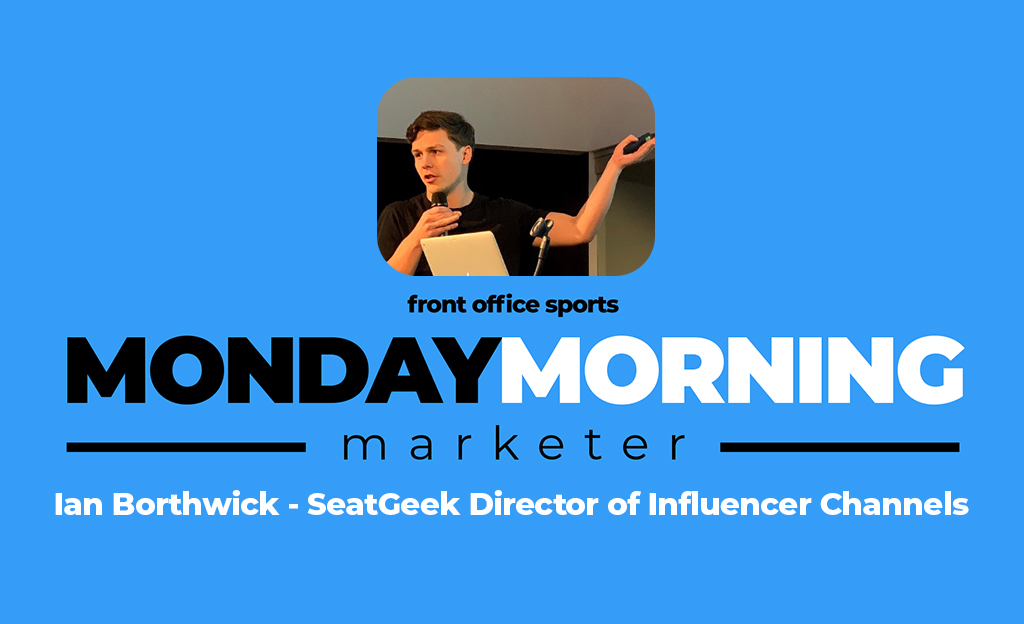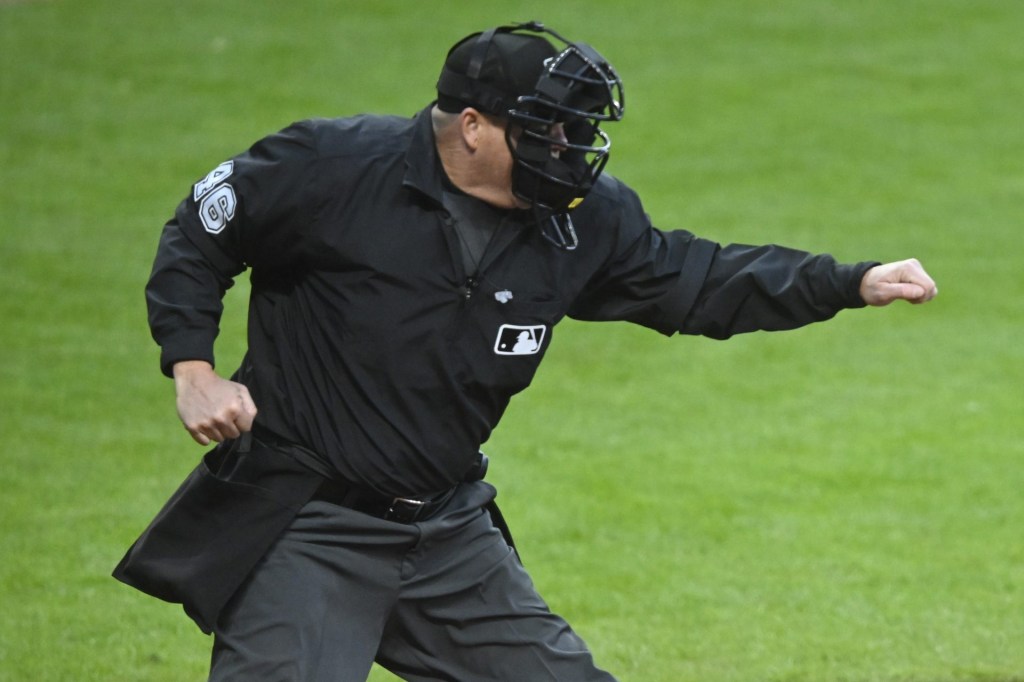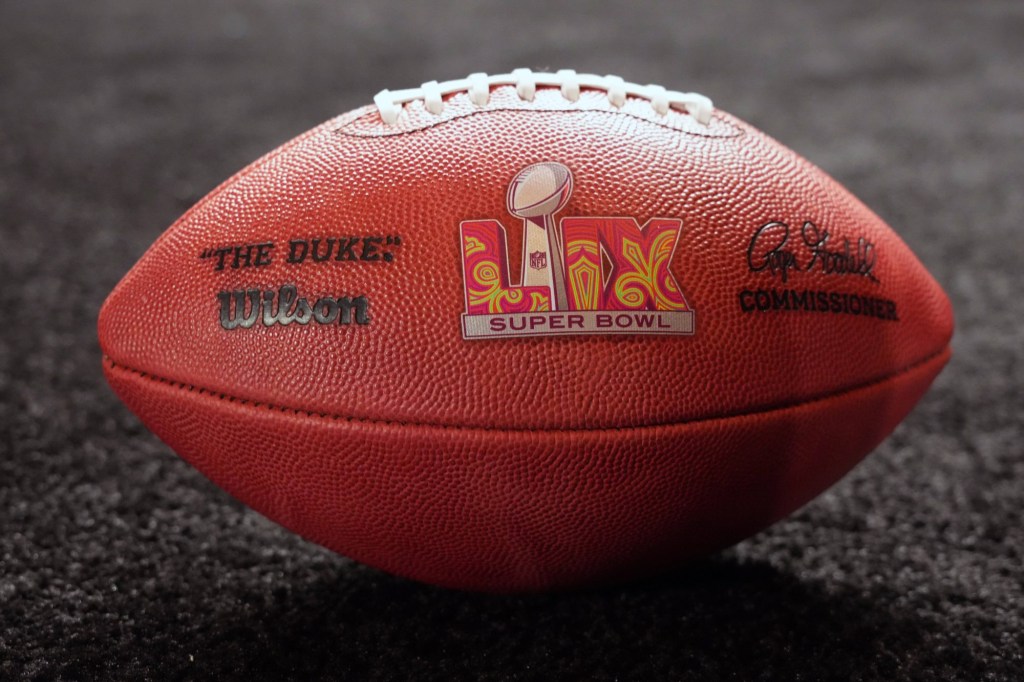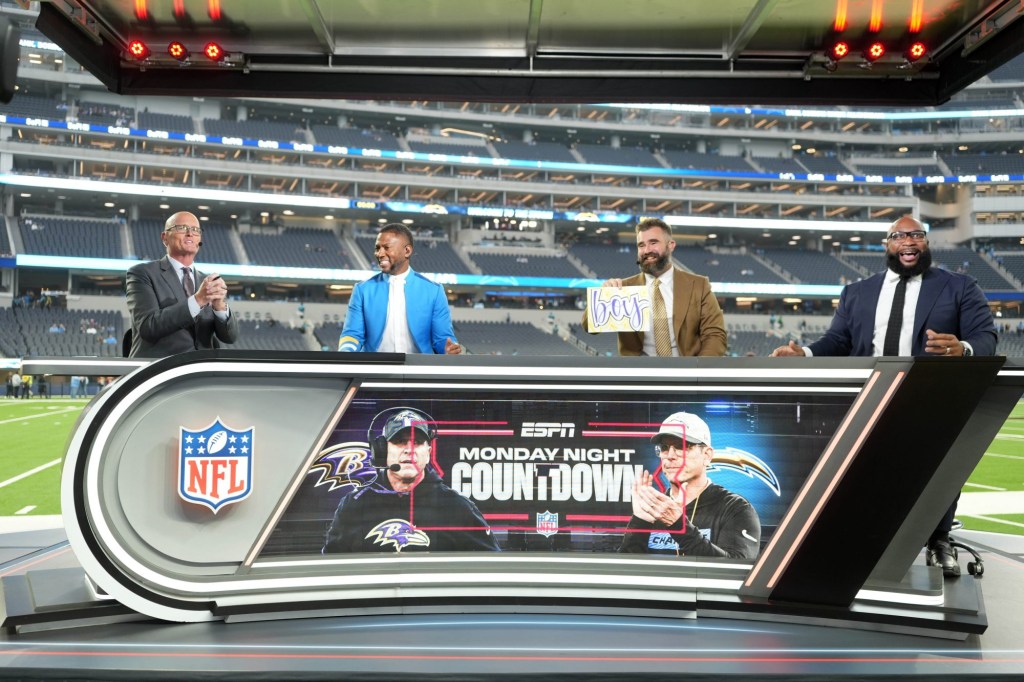As younger generations continue to migrate away from traditional media, the influencer world is emerging quickly.
Few in sports seem to have it figured out like SeatGeek. Since 2017, the company has grown its influencer marketing program to include more than 1,000 creators, producing content that has received more than 2.5 billion views. The company has worked with creators from David Dobrik, Casey Neistat, and Lilly Singh to athletes like Alex Morgan and media personalities and outlets like Pat McAfee, Pardon My Take, The Bill Simmons Show, and Pod Saves America.
At the helm of the ticket company’s influencer marketing is Ian Borthwick, who has built up relationships with influencers thanks to his time in marketing at SeatGeek after an earlier stop at Wasserman.
The resulting relationships churn out authentic interactions and messaging, which resonates with consumers who have regularly proved they’re distrustful of large brands and traditional advertising.
The way SeatGeek has used influencers has helped turn Borthwick into an influencer of his own, and SeatGeek’s “Team SeatGeek” account has more than 1.5 million followers Instagram itself. As Borthwick says, “We’ve become an inside joke and meme within the community.”
FOS caught up with Borthwick to find out how he goes about building authentic influencer relationships to connect SeatGeek to a new audience.
SeatGeek’s foray into influencer marketing wasn’t necessarily by design. The company began with a successful podcast ad campaign. Recognizing the success of using a podcast host with authenticity, the company saw NBA2K gamers drawing in upward of 200,000 views a video on YouTube. As Borthwick puts it, they soon started dropping into the gamers’ direct messages.
From there, he asked how to build a relationship with gamers, including the 2Hype YouTube team, to connect with their viewers. Before long, SeatGeek had built a court in the 2Hype House backyard.
Borthwick: You have to respect their creativity. When we work with any influencer, we don’t have a three-page creative brief or directive about how to market us. We want them to integrate us in a way that’s natural to the audience.
[The gamers are] our first court sponsorship, it’s respecting their creative freedom. That relationship is built for so long; we’re in their community. This is what SeatGeek is, how can we support your content? How can we value add?
SeatGeek finds those influencers by scrutinizing what influence actually means in the modern media landscape. Someone like Dobrik has massive followings across YouTube, Instagram, and Twitter, as well as a podcast. Wherever he goes, his followers go.
The average influencer is young, so while they might have a following, the full allegiance from the audience hasn’t been established. A trusted influencer such as Dobrik, however, has driven more than 10,000 people to a pop-up shop.
Borthwick: It comes down to finding purchasers, which means you have to ask yourself, is this person influential? If this person showed up at Central Park, how many would run out of their house to see them? In the YouTube space, people get a lot of views and likes, but they might not have actual influence. Usually, the things we look for are long-form content, whether podcasts or YouTube, where it’s people who care to consume it.
It’s a cliche, but it’s more art than science. There’s no tool that can suss it out; you have to spend time watching.
With Pat McAfee, a simple sponsor agreement was enough to provide support. The company was his podcast’s first sponsor and is now in the third year. Borthwick even finds himself on the Pat McAfee Show somewhat regularly.
Borthwick: Pat needed sponsors, and we were there to do it. The ad reads are his own brain; we’re not overly restrictive in what he needs to say.
The endorser will do a better job pitching a product to their audience. They know it, they know how to talk to them. That can be scary, but if you’re not willing to take a little risk, you lose the power of influencer marketing. As soon as they’re reading something, you’re basically a banner ad.
While influencers are a key component of SeatGeek’s marketing, the company doesn’t completely let traditional avenues close – it has several partnerships across sports, including a league-level deal with MLS. But it even finds ways to tie in its influencers to those official team partnerships.
For example, the company brought in 2Hype for a skills challenge against New Orleans Pelicans guard Lonzo Ball. Likewise, SeatGeek brought two Madden gamers to AT&T Stadium to play on the stadium’s massive video board, helping bolster its partnership with the Dallas Cowboys.
Borthwick: We have these three-way channels and broadcast the partnerships. It’s another way to amplify the partnerships. The teams see it as a value-add, too, to bring the stadium to an audience.
It’s definitely part of our value add we bring to teams we partner with. All those teams know we have a world-class influencer team.
While there’s risk involved with letting the influencers run wild with the company’s messaging, Borthwick said the company is, of course, tracking metrics. While likes, impressions, and comments are essential, as with any campaign, SeatGeek is more concerned with driving purchasing.
Borthwick: Everything has to be tracked – we don’t do marketing without proving the ROI of what we’re doing. The influencer marketing efforts, any of that stuff we have a code within the ad read and track how often that code is used, and make sure we’re sweeping most efficiently across channels.
While influencer marketing is a more recent phenomenon, boutique agencies have popped up to help facilitate the relations, and more established public relations and marketing agencies have started departments as well.
But SeatGeek has an in-house team dedicated to influencer marketing. In the past year, SeatGeek has worked with more than 1,000 internet influencers.
Borthwick: It’s not in SeatGeek’s DNA to outsource it. It’s scary to tackle it that way, but empowering because once you get to work, it’s empowering and you can blow it out. If you outsource it, an agency might get a ton of views and comments and say it’s working, but it’s hard to really feel that impact.
It’s very time-consuming, but you can create those one-on-one relationships keeping it in-house.
We’ve taken steps every year to build it. Two years ago was our first long term deal, last year we did more of those.

















